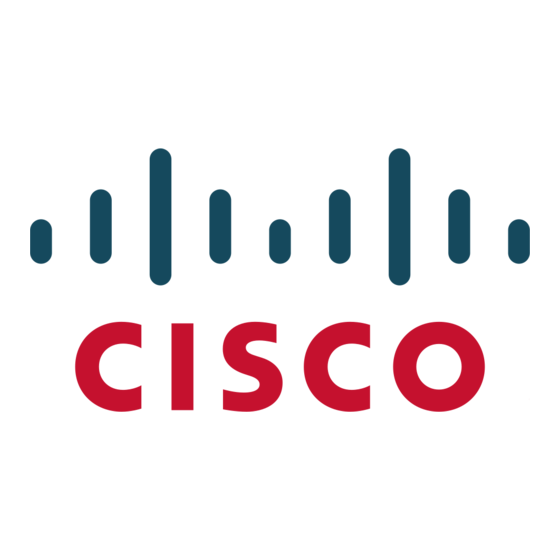Cisco 1751 Manuale di avvio rapido - Pagina 16
Sfoglia online o scarica il pdf Manuale di avvio rapido per Router di rete Cisco 1751. Cisco 1751 35. Modular access router
Anche per Cisco 1751: Panoramica della soluzione (16 pagine), Scheda tecnica (19 pagine)

Configuring Voice-over-IP
You can name your router by using the global configuration hostname command.
Note
(For information about port numbering, refer to the section on
earlier in this guide.)
Table 6
Telephone Number
408 555-3737
408 555-4141
If your router is configured with three VICs, a total of six telephones and fax machines can be connected
Note
to it. As the router has only three slots, you need to replace one VIC with a WIC to provide an interface
for IP connectivity to the WAN and for data traffic. To accommodate more than six voice devices, you
need to add more routers or use an E&M VIC and a local PBX, rather than connecting every telephone
to its own FXS VIC.
Local Dial Peers
To route a received voice call to the right destination, the router needs to know which telephone number
belongs to each voice port. For instance, if a call comes in for 408 555-3737, the router needs to know
that this telephone is connected to voice port 0/0 (as shown in
needs to know the information in
To hold this information, Cisco IOS software uses objects called dial peers. A telephone number, a voice
port, and other call parameters are tied together by associating them all with the same dial peer.
Configuring dial peers is similar to configuring static IP routes—you are telling the router what path to
follow to route the call. All voice technologies use dial peers to define the characteristics associated with
a call leg. A call leg is a segment of a call path, for instance, between a telephone and a router, a router
and a network, a router and a PBX, or a router and the PSTN. Each call leg corresponds to a dial peer.
Dial peers are identified by numbers, but they are usually referred to as tags to avoid confusion with
telephone numbers. Dial-peer tags are arbitrary integers that can range from 1 to 2
Within the allowed range, you can choose any dial-peer tag that is convenient or makes sense to you.
Dial peers on the same router must have unique tags, but you can reuse the tags on other routers.
Table 7
This type of dial peer is called a POTS dial peer or a local dial peer. The term "POTS" (plain old
telephone service) means that the dial peer associates a physical voice port with a local telephone device.
Table 7
Telephone Number
408 555-3737
408 555-4141
You should construct a table similar to
numbers and dial-peer tags.
Cisco 1751 Voice-over-IP Quick Start Guide
16
West Router Telephone Numbers and Voice Ports
Voice Port
0/0
0/1
Table
assigns a dial-peer tag to each telephone number and its associated voice port on the West router.
West Router Local Dial Peers
Voice Port
0/0
0/1
"Determining Voice Port Numbering"
Figure
6.
Dial-Peer Tag
401
402
Table 7
for your own routers, assigning your own telephone
11.) In other words, the router
31
–1(2147483647).
78-11259-05
